1. Classification by predisposing factors
According to the different predisposing factors, the accidents are divided into two types: liability accidents and non-responsible accidents.
Non-responsible accidents mainly include: natural disaster accidents and accidents that people have not yet recognized about the regularity of certain things, and the current scientific and technological level is still unable to prevent and avoid.
Liability accidents refer to accidents caused by human factors such as illegal operation, illegal command, violation of labor discipline, management defects, poor production and operation conditions, design defects, and poor equipment maintenance. Sub-class accidents can be prevented.
2. Classification by degree of injury
According to the degree of injury, the accident is divided into three categories: death, serious injury and minor injury.
(1) Death accident. An accident that caused death.
(2) A minor accident. Refers to the need to rest for one working day and above, but did not reach the level of serious injury.
(3) Serious injury. Refers to the "Opinions on the scope of serious accidents" issued by the relevant departments of the State Council, and the injuries diagnosed by the doctor as serious injuries. Any one of the following circumstances shall be treated as a serious accident:
Diagnosed by a physician to become disabled or may become disabled;
The injury is serious and requires a large technical operation to save lives;
Severe burns, burns or burns in non-critical areas, burns account for more than 1/3 of the whole body area;
Severe fractures, severe concussions, etc.;
Eye injuries are heavier and blindness is possible;
Hand injury, foot injury may cause disability;
Internal injury: visceral injury, internal bleeding or injury to the peritoneum.
Any injury that is not within the above-mentioned range will be considered to be heavier if it is diagnosed by the hospital. The above-mentioned points can be referred to according to the actual situation. The administrative department of the enterprise will conduct individual research with the grass-roots trade unions and make comments, which will be reviewed and determined by the relevant local authorities.
3. Classification by accident damage degree
According to the degree of injury caused by accidents and the number of casualties, it can be divided into six categories: minor accidents, serious injuries, fatal accidents, major casualties and major casualties.
(I) A minor accident. Refers to an accident involving only minor injuries among injured workers.
(2) Serious injury. Refers to an accident in which only the injured employee is seriously injured (including minor injuries in many accidents).
(3) Death accidents. Refers to an accident that killed one or two people at a time (including multiple injuries and serious injuries in accidents).
(4) Major casualties. Refers to an accident that killed 3-9 people at a time.
(5) Extraordinary casualties. Refers to an accident that killed 10 to 49 people at a time.
(6) A particularly serious accident. According to the State Council No. 34 “Interim Provisions on the Procedures for Investigation of Special Major Accidentsâ€, an accident involving 50 people or more or a direct economic loss of 10 million yuan or more.
4. Classification by nature of accident
According to the nature of casualties, it can be divided into roof, gas, electromechanical, transportation, shooting, fire, water damage and other 8 types of accidents. According to the statistical classification standard of casualty accidents classified by Coal Safety (1995) No. 50 “Report on the Casualty Accidents and Statistics of Workers in Coal Industry Enterprises†(Trial), the production accidents of coal industry are divided into the following eight categories:
(1) Roof accident. Refers to mine roofing, sheeting, roof loss, roof support tripping, impact ground pressure, open pit mine landslide,
Accidents such as collapse of pits and floor accidents are also considered as roof accidents.
(2) Gas accident. Refers to gas (coal) explosion (combustion), coal (rock) and gas outburst, gas poisoning, suffocation.
(3) Electromechanical accidents. Refers to accidents caused by electromechanical equipment (facilities). This includes accidents during the installation, overhaul and commissioning of transportation equipment.
(4) Transportation accidents. Refers to accidents that occur during the operation of transportation equipment (facilities).
(5) Shooting accidents. Refers to the accident caused by the collapse of the gun and the firing of the gun.
(6) Fire accidents. Refers to the natural fire caused by coal and vermiculite and the accident caused by external fire (the coal seam spontaneous combustion has not seen an open flame, and the escape of harmful gas poisoning is regarded as a gas accident).
(7) Water damage accidents. Refers to accidents caused by surface water, goaf water, geological water, industrial water and accidents caused by yellow mud and quicksand.
(8) Other accidents. Accidents other than the above 7 categories.
5. Non-injury accidents
In the coal mine production activities, due to poor management, operational errors, equipment defects and other reasons, resulting in interruption of production, equipment damage, etc., but did not cause casualties, known as non-injury accidents. The “Notice on Strengthening the Management of Non-Injury and Accidents†issued by the former China United Coal Mines Corporation divided the non-injury accidents into three levels.
First-class non-injury accident: the accident caused the whole mine to stop working for more than 8h, or stop the mining area for more than 3 days; gas and coal dust combustion and explosion; coal and gas outburst, its protruding coal volume exceeds 50t (including 50t); The fire will close the mining area or affect the safe production; the fire will stop all or one of the wells from production; the ventilation in the mining area will be poor, the wind gas will exceed the limit or the gas will accumulate, resulting in the suspension of production; the length of the coal mining face will be 10m (including 10m); The length of the roof top is above 5m (including 5m); the length of the roadway is 10m (including l0m);
Secondary non-injury accident: The accident caused the whole mine to stop working for more than 2 hours, but less than 8h, or the mining area stopped working for more than 8h, but less than 3 nights and nights; the underground fire closed the mining face; coal and gas outburst, its protruding coal volume exceeded 10t (including 10t); due to flooding, the mining area is shut down; the working face is poorly ventilated, the gas in the wind exceeds the limit or the gas accumulates, causing the production to stop; the coal mining face has a roof length of more than 5m (including 5m); the heading face of the driving face exceeds 3m (including 3m); the length of the roadway roof is more than 5m (including 5m).
Three-level non-injury accident: the accident caused the whole mine to stop production for 130min~2h, or the mining area was shut down for 2~8h; the ventilation was poor or the local ventilator had no planned power outage, so that the local gas accumulation in the wind flow, the gas concentration exceeded 3%; coal With gas outburst, the outburst coal volume is below 10t; the range is not high; the mining surface stops production due to flooding; the roof length of coal mining face exceeds 3m (including 3m); the length of roof of tunneling face is less than 3m; roadway The length of the roof is less than 5m.
Lifting platform is a vertical transport of people or things lifting machinery. Also refers to the vertical conveying equipment in the logistics systems such as factories and automatic warehouses, and the lifting platform is often equipped with various flat conveying equipment, which serves as the connecting device of conveying lines of different heights.
Generally USES the hydraulic pressure drive, therefore calls the hydraulic elevator platform. In addition to the transport of goods at different heights, it is widely used in installation, maintenance and other operations at high altitude.
The characteristics of the lifting platform free lift has been widely used in municipal maintenance, terminal, cargo transportation logistics center, building upholster, etc., installed the automobile chassis, storage battery car chassis, such as free walk, work height space also change, with light weight, walking, electric start, since the leg, the operation is simple, operation is big, will overcome obstacles 360 degrees to rotate aerial work, as well as merits.
The Main Types Of Lift Platform:
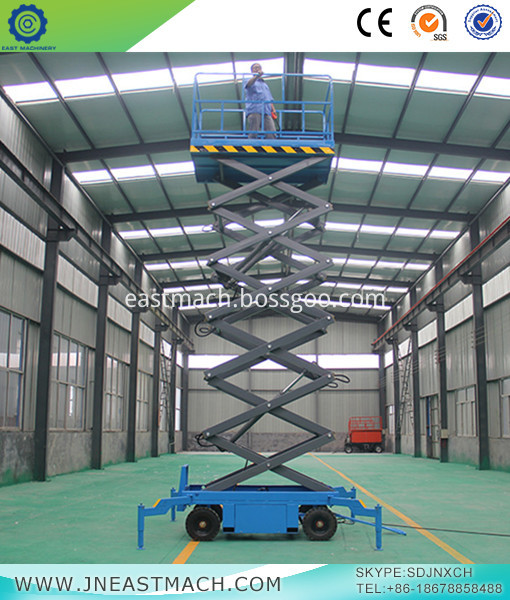
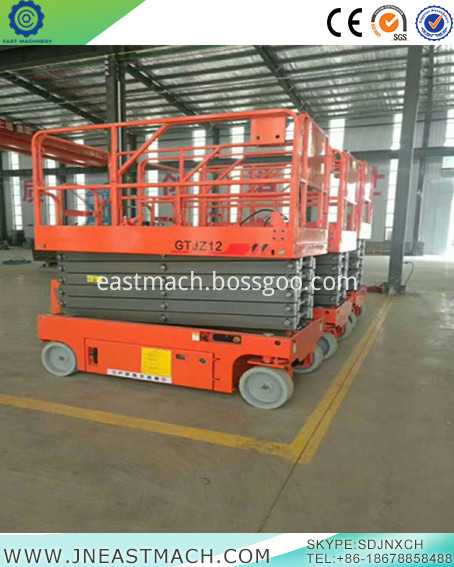
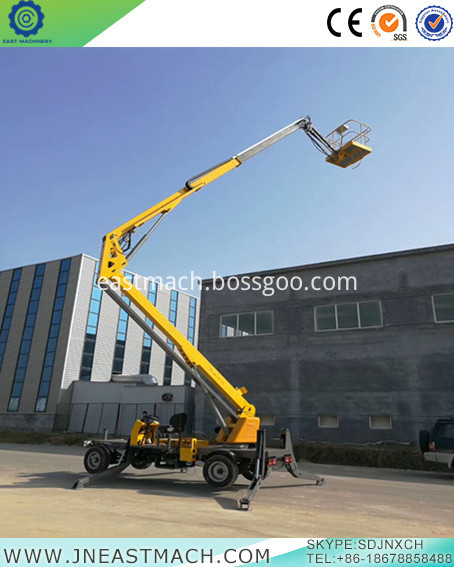
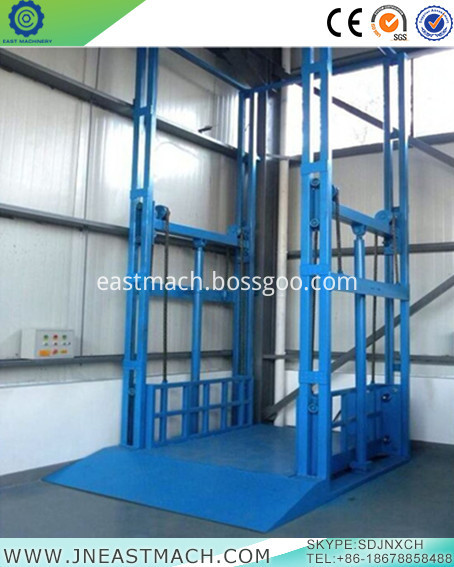
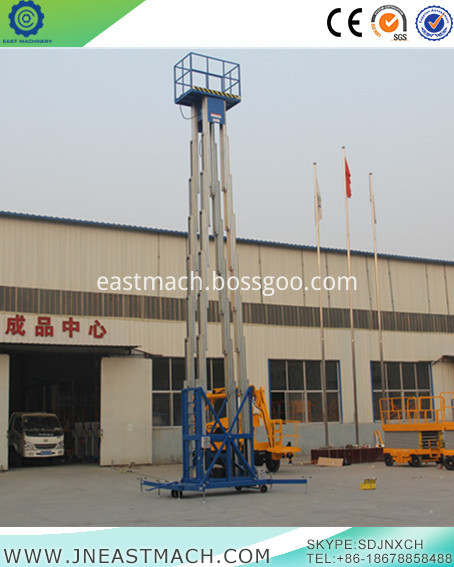
Application Area:
Lift Platform is widely used in workshop maintenance, industrial installation, equipment overhaul, property management, warehouse, aviation, airport, port, station, gas station, stadium, exhibition hall and other places.
If you have any questions, please contact with us directly. Lift Platform are produced with High Quality and Good Appearance. Welcome you can visit our Factory. For inqury, Please send mail directly to us.
Lift Platform
Self-Propelled Scissor Lift,Truck Mounted Scissor Lift,Stationary Scissor Cargo Lift,Folding Boom Lift
Jinan East Machinery Co.,Ltd. , https://www.jneastmach.com
